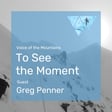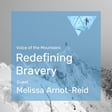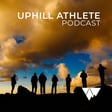Become a Creator today!Start creating today - Share your story with the world!
Start for free
00:00:00
00:00:01

Talking Tactical Training with Drew Hammond
In this episode, Scott Johnston talks with Uphill Athlete's military and tactical coach, Drew Hammond. In this episode Scott and Drew discuss: Drew’s background; using hybrid strength and endurance methods; approaches for building an aerobic base for tactical athletes; training soldiers like athletes; training philosophy; scheduling training around deployment and at while at home; creating longterm positive change in base level physiology.
Transcript
Introduction to Uphill Athlete Podcast
00:00:01
Speaker
Welcome to the Uphill Athlete Podcast. These programs are just one of several free services we provide to disseminate information about training for mountain sports.
Resources and Contact Information
00:00:10
Speaker
If you like what you hear and want more, please check out our website, uphillathlete.com, where you'll find many articles and our extensive video library on all aspects of training for and accomplishing a variety of mountain goals. You'll also find our forum where you can ask questions of our experts and the community at large. Our email is coach at uphillathlete.com, and we'd love to hear from you.
Collaboration with Drew Hammond
00:00:36
Speaker
Welcome, everyone, to another uphill athlete podcast. Today, my guest is uphill athlete, our tactical coach specialist in Drew Hammond. And Drew and I are going to be talking a little bit about our relationship, how we came to get to know one another, how we've worked together and collaborated on
00:00:56
Speaker
training for tactical athletes and also what he's found valuable from the uphill athlete arsenal that's made it useful and on also what kind of why he reached out to us. So welcome, Drew. Thanks for joining me. Yeah, thanks for having me.
Drew's Journey into Tactical Training
00:01:11
Speaker
Well, let's start with the beginning. I got an email from you out of the blue, what must have been close to four years ago, saying, hey, somebody of mine gave me your book. I read it. And I'm a trainer for the Air Force Special Forces. And I'd like to pick your brain about some training ideas and that sort of thing. And it was totally out of the blue.
00:01:37
Speaker
I really appreciate your willingness to take that chance and contact me. Um, and I think we're, I like to think that we're very approachable people and we're not setting ourselves on any pedestal and whatnot. So, and I welcome conversations about these kinds of things all the time, but what prompted you to make that leap and email me? Yeah. So I, um.
00:02:01
Speaker
I think the first time, and I'm sure I'll get correct on this, but the first time I had heard about uphill athlete in particular to train for the new optimism was through one of the guys that I was training at the time at my squadron.
00:02:15
Speaker
And he himself had previously been, I think, an assistant strength coach at a university. So he was well-versed in sort of training. And he was one of those athletes that I would always sort of have these conversations with. And he mentioned that a lot of the guys that he had interacted with on deployments from various organizations had been talking about the book. And so it was very easy for me to just, you know, hop onto the website, send an email to you and say, hey,
00:02:45
Speaker
You know, I had heard from the guys that I'm working with that this is an effective methodology. I don't know a bunch about it, but I would love to pick your brand sometime. And I know that off the back of that email, we've probably had our first phone call, which took, I think we talked on the phone for over an hour, just about some of the things that I had seen with my population, some of the stuff that you had been working on and where there was some cohesiveness there. And then I think off the back of that, it was just an interesting back and forth over the years, really,
00:03:13
Speaker
taking the uphill athlete methodology and then mapping it onto what I was seeing in the tactical community to come up with this sort of hybrid, if you want to call it that way of training those guys.
Transition to Air Force and Training Philosophy
00:03:26
Speaker
And what was your background prior to that? I mean, as I recall, you didn't have an extensive endurance training background. You kind of grown up in more in the strength and conditioning world and gone to school about that and that sort of thing. So why don't you give us a little background on yourself?
00:03:41
Speaker
Sure. So, you know, growing up as I did sort of early 2000s, obviously with everything going on overseas, very early on as a high school kid was like, oh, I'm going to be, you know, the next Rambo. So got introduced that way through to CrossFit and then another program called SealFit, which was, you know, CrossFit with a Navy Seal Twist. But
00:04:04
Speaker
So my introduction to fitness was very much this kind of what we would call functional fitness, high intensity interval training, lots of Olympic lifting, lots of weight training, and that sort of carried me through college. And then after I graduated, I went overseas to the UK to do a master's in strength and conditioning, which was very much research based and very much
00:04:27
Speaker
a lot more technical than I think I was used to coming from this, again, this chaos of sort of the CrossFit world. But it was, again, much, much more catered towards the strength training side of things. So to your point, yeah, not much of a background in endurance at all. And then after graduating, immediately started working with the Air Force within special operations. So, again, most of those guys prefer
00:04:53
Speaker
They prefer lifting weights to doing any sort of cardio, at least they did at the time. And obviously, as we'll get into it with this conversation, the uphill athlete methodology sort of turned some of that on its head. But I am by no means a runner. I do not like cardio, although I have now started to force myself to enjoy it a little bit more, training for an Ironman. But it's definitely been a learning process for me and something that I always have to go back to.
00:05:20
Speaker
to sort of check and make sure that the things that I'm doing on the endurance side of the house still makes sense. Well, I recall that first phone conversation too, and I was, you know, I was hopeful because as you probably know already, Steve and I had been involved with working with some special operations groups before, primarily Navy SEALs, and we'd kind of hit a
00:05:48
Speaker
brick wall, honestly, in that area because of the existing culture there. I mean, we made some inroads with a few individual seals and we still have some, I made some great friends out of that and still work peripherally with a few seals. But what we found was when we
00:06:07
Speaker
When we went to Virginia Beach to make our presentations, we were walking into a gym full of muscle heads. For them, endurance was 15 repetitions of something. They had no concept. Not only did they have no concept, they had no interest in learning anything about endurance.
00:06:31
Speaker
I was hopeful when you contacted me that, oh, maybe here's a foot in the door where we can actually make a difference, because my personal experience in working with special operators, which I've worked with quite a few, doing things sort of the uphill athlete way, but also taking into consideration the incredible demands of that job.
00:06:50
Speaker
we've been able to make huge gains for these guys. But it does require kind of a mindset shift, which I think is hard organizationally to make that shift. So when you contacted me, I thought, oh, great, you're somebody who might even be able to influence this gigantic monster of an organization and shift the way
Adapting Uphill Methods for Tactical Athletes
00:07:11
Speaker
they're thinking. And so I was excited actually to begin to work with you. And I think we had a lot of collaboration, certainly that first year.
00:07:20
Speaker
Yeah, and I think that it was really fun for me because what little information or knowledge I had about this type of the tactical world had come from these personal interactions I'd had with a few SEALs that I was training. But here you had several squadrons working underneath you, so you had a lot of test monkeys to run this stuff with.
00:07:44
Speaker
Yeah, I think the biggest shift for guys, or I guess I should back up and say the biggest hesitation that I think for guys was that once they've made it through, at least from my experience, once they've made it through,
00:07:59
Speaker
their selection pipeline, which is, in almost all cases, very much endurance-based, high-volume calisthenics. I mean, everyone's kind of familiar with what they've seen on TV when, you know, whether it's buds with the seals or what my guys in the Air Force would go through, but they get through that pipeline and, you know, they made it in a sense. And the last thing that they want to do is high-volume calisthenics, lots of endurance, et cetera, et cetera. They just want to get,
00:08:27
Speaker
I would say bigger, faster, stronger, minus the faster part, just bigger and stronger. So that was the environment that I stepped into. You know, day one is like a very young practitioner. And what I noticed when I started to add in a lot more of this super low intensity, higher volume endurance type stuff, zone one type work.
00:08:48
Speaker
There was a lot of hesitation initially, because again, you're asking these guys who always want to do more, do more, do more, to sort of slow things down a little bit and focus on a single modality in a lot of cases, whether that's rowing or biking or whatever. So there was a lot of hesitation early on, but I know a story that you and I have told many times.
00:09:09
Speaker
Once in my case, once a couple of the guys went out and had done a training evolution with the Marine Corps actually that involved this super lengthy full day cactus to clouds is what it was called in California.
00:09:25
Speaker
They came back to me, and by this point, I think we'd been doing sort of this quote unquote, up a laughly style training for several months. They came back to me and they were like, holy cow, we blew those guys away. Like, you know, they had to stop several times to rest. We just kept pushing on. So once they were able to tangibly see, I think what having this broad base of aerobic fitness was able to do for them, kind of in all the different domains, whether that was weightlifting, rucking, training,
00:09:55
Speaker
The buy-in was much easier. It was a much easier sell for those guys to say, hey, today we're going to take a step away from the weights. We're going to focus on the heart rate, do a lot of zone one type work, build up a lot of volume, and it's going to pay huge dividends down the road, but you just have to trust in the process.
00:10:14
Speaker
And I think that one of the things that really impressed me about your approach was, you know, it would have been, you know, easy for you to just, I mean, I don't know how well it would have worked, but I think it would have been easy for you to just essentially copy the training methodologies that, you know, we would normally prescribe to, let's say, an alpinist or a ski mountaineer or something like that.
00:10:36
Speaker
And those aren't directly applicable. I mean, the fundamental ideas and the principles of theories, all that is applicable, but you're not going to get these guys doing 18 hours of aerobic work in a week. And they shouldn't be. They got all this other stuff that's important to them.
00:10:53
Speaker
And I thought what was really impressive to me when you and I got down on the weeds on the number of phone calls and email exchanges where I was seeing how you were modeling the, you were taking the ideas that we'd built into our books and
00:11:11
Speaker
kind of crafting them into not only an effective training program for a tactical athlete, but one that they buy into, which in my case, I think that was my problem. My initial problem in my first trip out to Virginia Beach was that I was kind of out of that, you know, my way or the highway kind of approach. And you know, I got nowhere where that, which was probably just stupid on my part.
00:11:34
Speaker
And I didn't realize quite what a big brick wall there was there about, you know, those guys just like to lift weights. And I'd heard that from all the seals I've worked with is like, you know, those guys just want to get big, you know, deadlift 700 pounds or whatever. And I guess I didn't take it to heart. But anyway, in your case, what I saw was you in a sense kind of fooling these guys into
00:11:59
Speaker
building a good aerobic base without, let's say, putting them on a treadmill or making them go outside and run for two hours. Why don't you talk a little bit about
Innovative Aerobic Training Techniques
00:12:08
Speaker
that, how you managed to do that? That was a breakthrough in my mind. It took you and me and Steve to another level, which I want to talk about once we tell this story.
00:12:22
Speaker
You know, I think it's summed up well in that article that we have out on the website, sort of the endurance stamina work capacity type thing. Um, because like you said, there was almost this trickery that had to happen for guys to understand that there's a better or not better. There's just different ways of building what we would consider that aerobic base. And it doesn't always have to involve, you know, like 18 hour efforts across huge climbs or what have you. Um, so one of the ways in which.
00:12:50
Speaker
I saw a lot of success early on was in taking a lot of the same fundamental principles that you would read about, you know, in the New Alpinism. But tweaking it and adding a little bit of what I would call a work capacity element. And I know you and I had had conversations as well of like, you know, maybe
00:13:10
Speaker
And I don't know if this is founded in science or biology or what have you, but we had both seen instances where maybe the modalities themselves within these time domains didn't really matter so much as just the athlete's ability to sustain work across whether it's 10 minutes, 30 minutes, an hour.
00:13:29
Speaker
So once we had sort of opened that Pandora's box in a sense and understood that with that framework in mind, you can have a lot more creativity in your prescription and you can cater it much better towards the individual athlete. I saw, you know, like you said, huge success with guys just being able to say, okay,
00:13:50
Speaker
If I think of this from a pure alpinism perspective, and we just need a single modality, whether that's running, walking, hiking. But for my guys, I need to do the same thing with sleds, with sandbags, with kettlebells.
00:14:04
Speaker
If a particular athlete is partial towards a particular modality, or if I need to find a way to sort of progress these modalities, I can do that by increasing the volume or increasing the intensity in a lot of the same ways that I would if I were just training an alpinist. But by adding, again, and we've gone back and forth about this for years, what is work capacity? To me, it's this sort of gray area that allowed me to touch on both
00:14:29
Speaker
the athletes desire to get their hands on heavy things. And what I knew as a practitioner of, we just need to get you exposed to volume. And I found that that created this nice, like I said, middle ground between those two things that sort of pushed all of those qualities into a higher level of development. That was a stroke of genius, honestly. Because I frankly was sort of struggling with
00:14:57
Speaker
with how to translate what we had done with an uphill athlete or in training for the New Alpenism in particular, that's the book that you're referring to that people were saying they were using. And at that time that was the only book we had out. But how to translate those things into this tactical world. And I'll take a quick segue on that and that is that
00:15:25
Speaker
you and I both understand that this big aerobic base that we beat that drum day in and day out, we've got literally probably tens of thousands, if not more words written about this, that that is a foundational element to this kind of overall endurance fitness. And if your aerobic base is big, you're gonna be able to handle, you're gonna have a higher work capacity in almost every modality, probably every modality.
00:15:52
Speaker
But what often gets lost in the, I think, maybe it's in the way I'm presenting it or the way people are understanding it is that this big aerobic base is an end in itself.
00:16:05
Speaker
But what we understand about it, and I think I'd like to clarify here, and maybe I need to do a better job in writing about it, is that we call it a base because it's a base that supports all the other training that goes on and layers on top of it. And if your base sucks, I mean, if you're aerobically deficient, then you got to get that base straightened out first, and then you can worry about all the cool, sexy training and these different modalities you're talking about.
00:16:32
Speaker
you were clever enough to go, oh, actually maybe we can train this, you know, help develop this aerobic base without having to go out for two-hour runs at the time or that type of, you know, more conventional aerobic training. And you had great success with it. So much so that
00:16:52
Speaker
I think it was probably a year or so later when Steve and I were invited to come again out to Virginia Beach to work with the SEAL Team 6 and talk to their trainers. I said, I want this guy, Drew, to come with us. You were not affiliated with uphill athlete at that point at all, but you and I had so many
00:17:13
Speaker
you know, correspondences and phone calls by that time that I was beginning to feel like, okay, I understand where this guy's coming from. He could be an intermediary to bridge the gap between us and this, these trainers out in Virginia beach.
Challenges in Tactical Training Environments
00:17:29
Speaker
And so thankfully you were willing to come out there and meet us and we had a great trip and I got to know you better there.
00:17:37
Speaker
Unfortunately, I don't think we punctured that brick wall, but I don't think we made any great adherence out there with our approaches. But it did give an opportunity for you and I and Steve to kind of
00:17:54
Speaker
have the time to sit down and talk about our shared interests and how this could build. And at that time, we did not even consider that we would probably have a tactical training program. It was only later when we started getting more and more requests from
00:18:13
Speaker
guys who were going to be going through these selections for the various special operations groups that I thought, you know, I know a guy who could really help us here because first of all, I don't know a whole lot about this and I'm really busy training these other athletes and working in areas that I do know something about and trying to build the business and keep all the wheels on while we're going forward. And so I contacted you and said, hey, what about
00:18:40
Speaker
you know, would you be interested in coaching for us and helping us maybe even write some tactical training plans? That's sort of how we came to be at the current stage we're at. But what was your take on the whole Virginia Beach experience? I mean, obviously the best takeaway from that was, like you said, getting a chance to sit down with you guys and kind of codify a lot of the things that we have been talking about periodically through phone calls and email exchanges, what have you.
00:19:10
Speaker
And the other thing that too was nice about it, and I think I've experienced this several times just professionally, is that when you have an idea, oftentimes just by default, you think it's a great idea and you'll see, you know, some successes in your own circles and it kind of reinforces this belief that your idea makes sense.
00:19:32
Speaker
put that, you know, tangibly into a presentation and to have that conversation with folks that may have been, you know, like in the SEALs cases, may have been somewhat hesitant to move towards change. Like I said, helps
00:19:47
Speaker
modify for me what I thought was a correct way to train tactical athletes. And like you said, there were guys in that organization that appreciated it, and there were guys that were just going to go back and do whatever it is that they were already doing. And you'll see that in all of the organizations, the organizations that I've worked with, even in an embedded sense, you're never going to get 100% compliance in what you think is the right way to train. And that's just sort of the nature of the beast.
00:20:13
Speaker
Again, I think that the best part of that trip was being able to take something that I had kind of quote unquote built within a particular community, which for me was again, the Air Force.
00:20:24
Speaker
and to try to translate that to a different community with the Navy. And then in time since then translated to Army, translated to an international special operator. So it's been interesting to see how some of that methodology and some of that approach has changed and flexed based on the different athlete, the different demands of the selection process or the different demands of the deployment. And so for me, it's always good to have to,
00:20:54
Speaker
present your ideas or push your ideas up against someone who might be looking at it with more of a critical lens.
00:21:01
Speaker
I totally agree. It's one of the reasons I have attended coaching conferences throughout my coaching career is to get slapped down or to say, hey, wait a minute. Let's try this. Or let's see how this works. Or, hey, I've been doing this, and it's really had these amazing results. What do you guys think? And you're right. It's that kind of professional, critical,
00:21:25
Speaker
critique, let's say, of what you're doing that I think can help you learn. And that certainly felt like the process that you and I went through for probably six or eight months in getting to know one another and getting to bounce these ideas back and forth.
00:21:41
Speaker
caused me to think a lot deeper about some of these things and I'm sure had the same effect with you and in the end we kind of you know I was I was only a sounding board really for your ideas um and it was you that developed all this stuff you know only with you saying hey what do you think of this is this a decent way to go about this and you and I would you know
00:22:01
Speaker
bounce that back on a few emails and come up with something. But really, the heavy lifting you did, you're the one that did all that heavy lifting. I just was going, well, that looks great. Or no, I hope that's a good way to do it. Heavy lifting and long running. Yes, exactly. Yeah.
00:22:18
Speaker
And I wish we had been able to take you to, Steve and I went to a Special Forces Conference, International Symposium on Special Forces held in Colorado Springs hosted by the Kent Mountain Division.
00:22:35
Speaker
and they had brought in a lot of the different NATO Special Forces trainers and special operators that were there. We were mainly tasked to present about training for cold weather and high altitude during that thing, but I think it would have been
00:22:52
Speaker
if they'd given us the budget for it, I'd love to have had you there because I think it would have, you know, you're your kind of people. And it would have been, I think, really fun for you to meet some of those guys. I was really impressed by the Norwegian Special Forces guys. I was like, oh man, these guys got it figured out. And of course, they come from a country where, you know, kind of endurance sports are
00:23:15
Speaker
built into the culture and but they were also these great big enormous muscly huge guys and well you don't want to do the wrong thing with them. Yeah no that's true and I know a couple of the guys again kind of over in the European scene and you're right you see it's interesting how the sort of culture of the environment that you grew up in plays a role in your paradigms when you think of
00:23:41
Speaker
of training because, you know, the conference you mentioned, and there's tons of conferences like that. One thing that I noticed, I wasn't quite sure exactly what I was seeing early on as I was starting with these communities, but obviously with several years of exposure to it, you realize that no one has really come up with an effective paradigm for training tactical athletes. And you and I have spoken about this a handful of times where
00:24:08
Speaker
In my opinion, what uphill athlete had done and what you and I have been able to do and what we still do because it's evolving. It is a little bit different from what I see in a lot of these communities where the athletes are almost viewed as football players with camouflage is kind of the joke that we have. But you'll get a lot of practitioners that come from a collegiate scene, a professional sports scene, and they're trying to map
00:24:35
Speaker
these training approaches onto guys who have spontaneous deployments, random training trips. They're not in the gym all the time. They don't always have access to equipment. And inevitably those sorts of structures fall apart. And what you'll hear often when these practitioners explain that is like, oh, you know, it's just sort of the nature of the beast, but I just, I don't think that that's the case. And so it's been kind of fun playing within this
00:25:00
Speaker
this approach that we've created to see, you know, maybe a deployment doesn't have to mean a break in training. Maybe not having this or that piece of equipment means that, you know, you just throw everything away and start over. So having the flexibility and having the ability to, and the critical eye really, to create your own training paradigm for tactical athletes, as opposed to trying to map tactical athletes onto an existing training paradigm is just, it's a continuous work in progress. But I think that's sort of the direction that
00:25:29
Speaker
this whole thing is meant to go. It would seem like that's the best thing because he's certainly...
00:25:37
Speaker
These guys are professional athletes first. I mean, obviously they're warriors and they're skilled at all kinds of things. But I see having worked with a lot of professional athletes, I viewed their training as if they were going to the Olympics. Their Olympics involves gunfire. So that's a little different. But I think that that idea that, hey, we're going to treat you like an athlete more than just a soldier.
00:26:06
Speaker
And I think that helped me, and I think it also helped them kind of change the paradigm of how they thought about their training a little bit. But what have you been able to craft? Like, do you have any examples of what guys are on deployment, what you've done with them to kind of keep them from just regressing too much in their training? I'm sure you've had a few tricks that you've figured out. You know, it's interesting because when I started, and this was years ago,
Strategies for Deployment Training
00:26:34
Speaker
Coming from kind of a formal background in strength and conditioning and being exposed to, you know, all the Soviet literature and these ideas around periodization, you step into a tactical environment and the first thing that you're sort of taught is these deployment cycles. So in my case, in a lot of cases, I think with special operations, on paper it's four months away, eight months home. So
00:27:01
Speaker
You look at that and you think, okay, so there's my four month season and my eight month off season. And within that structure, within that calendar, I can sort of follow a lot of these things that I'm familiar with, whether that's a maintenance phase, a peak phase, you know, a de-load, whatever. What you quickly find though, is that in many cases, deployment is actually where the guys have the most time to train. They'll have equipment because we've been there long enough now to where a lot of places that they're deploying to have
00:27:29
Speaker
some semblance of a gym. They'll either take it with them or it's already there. They don't have the stressors that they'll have at home. They have questionably good food, but they have food. They get sleep. And that's not every deployment, but what I noticed is that a lot of times the deployment is actually the time when we can train the most consistently and train the best. And then when they get home,
00:27:52
Speaker
They're just inundated with, you know, they have to deal with their family. They're always going a week here, two weeks there, three weeks there for different training trips.
00:28:02
Speaker
Some of the more tangible approaches that I've taken to kind of navigate that minefield of chaos is to put a lot of control of the training process into the hands of the athlete, something that if you kind of look it up online, it would be considered athlete-centric training. And really what that means is that the coach doesn't serve the purpose of, hey, here's, boom, six months of training, see you in six months.
00:28:28
Speaker
It's more of an evolving process where if I'm training a guy, I still have some sense of, you know, what we would call a macro cycle or a long-term plan. I know the direction that we're going in. I know roughly what the demands of the job are. I kind of have a sense of what we need to train for within the confines of the mission and the deployment.
00:28:48
Speaker
But I'm never really thinking longer than one to two weeks at a time. So here's the week of training, gave me a little bit of feedback. That dictates what the next week of training looks like. And then that week dictates the next week. And you can, you know, for some guys, I would do that for three or four weeks at a time. For other guys, it might be one week at a time. But the important takeaway there is that I'm not locking someone into 12 weeks of training with like a, you know, de-load at the end of that. Because when you do that,
00:29:17
Speaker
And something inevitably breaks, whether they have to go away to do a hurricane response for a week, or they have to go do some, you know, quick mission. It throws the athlete into almost the state of panic because it's like, do I go back to the week that I was doing before I left? Do we go to the next week? What are my percentages? You know, these really granular things and these conversations you have with your athletes.
00:29:40
Speaker
But the ways that I found to navigate the nuance of the deployment, not having equipment, these sorts of things, is just having more of an evolving, adaptive approach that's focused very much on the athlete as opposed to me just dictating with them what they should be doing.
00:29:57
Speaker
which was like a super long answer to the question, but I think within that nuance, there are a lot of more specific examples of like, hey, I'm going to this location. We have these kettlebells, these dumbbells and some bands. And it's like, okay.
00:30:13
Speaker
you know, I still have this long-term view of where you need to be as an athlete, but given the equipment limitations, we can still check some of those boxes while being comfortable with the fact that when you get back, we'll still be heading in the right direction. And I think it's back to that earlier point about, you know, football players and camouflage, where if I am a professional athlete, the schedule is very much
00:30:38
Speaker
laid out and coordinated and it maps onto the season and you have a lot more control. The athlete has a lot more resources available to them. So in that case, a lot of these more traditional models make sense and you can get away with them. But just the chaos of the tactical space doesn't allow for that. And I think coaches and athletes that have tools in their toolbox that allow them to be flexible and proactive versus just kind of panicky and reactive see a lot more success.
00:31:04
Speaker
I can't concur any more than 100% totally, totally on board with that. And I think that's been the underlying thing we've tried, the prevailing thing we've tried to get across with uphill athlete is
00:31:20
Speaker
Having somebody you're interacting with, like a coach, who you can bounce these ideas off of, and maybe you lay out one or two weeks of training in advance, and then there's some opportunity for correction in there, self-correction, because inevitably something will happen during those two weeks that will result in some changes needed to be made. I mean, we're not mechanical, we're not machines where we're just going to go through the same pattern of movement all the time and have the same results.
00:31:48
Speaker
Even professional athletes who do nothing but eat, sleep, and train, they live like monks. They have to have pretty much constant adjustment. That's the reason they're checking in with their coach to say, okay, I did such and such workout. My legs were still really heavy from two days ago, whatever we did. We're going to need to tweak. The coach goes, okay, we're going to have to adjust this going forward.
00:32:10
Speaker
But that also is the, and I want to ask you how you've handled this, but like the main reason that Steve and I wrote these two books was that we knew most people won't have their own coach and we wanted to impart
00:32:25
Speaker
kind of what coach's knowledge would look like, how a coach evaluates the athlete. How do we, okay, here's what's going on. What do we do next? How do we handle this? How do we monitor training? How do we control training? And because we just understood that only a small percentage of folks will ever actually probably have a coach. Did you ever try to do any sort of education with these guys? And if so, did you think that was effective?
00:32:53
Speaker
Yeah, and actually I would say that, you know, it sounds cliche, but I, an educated athlete to me is sort of the athlete that I prefer to work with and just sort of the way in which I coach and program. And you'll see this with a lot of the guys that I have, you know, the remote athletes that I work with with uphill athlete is when we start kind of part of their onboarding process, in addition to getting a lot of the administrative stuff sorted, figuring out what a baseline week might look like, I almost,
00:33:23
Speaker
force them to be educated and learn about things like auto-regulation because you know rate of perceived exertion or RPE is something that I rely on very heavily to adapt to again that chaos that we talked about. So there's a hey you know when I prescribe you this level of intensity here's kind of what it should feel like when you see these types of movements here's what I'm looking for. So there's a lot of education to me both around
00:33:50
Speaker
the athlete having a good understanding of what they're doing now and what that is going to mean for the direction that they're headed in. But then also, and this I think is probably the biggest one, understanding that a stimulus, if we think about it in like a biological sense, and by that, I mean, you know, I give you sets of five on a squat, and that's gonna make you stronger. A lot of athletes think of it as, you know, I lift the weights, I do the run, and I get better. But what they don't realize is
00:34:20
Speaker
It's also how you feel. It's also your perception going into the training. It's also the relationship that you have with your girlfriend or your husband. It's also what you ate that day. It's also, you know, how motivated you are, what music you listen to. Like all of these things play a role. It's not just...
00:34:35
Speaker
a machine where I, like you said, put something in and I get this expected output. So I try to educate them consistently on this idea that they are very much in control of the trajectory of their adaptation. And I'm just kind of here to provide stimuluses and make sure that
00:34:53
Speaker
we're being very smart with how we spend what we call our adaptation currency. So it may be, hey, try to get a little bit of extra sleep, or if your knee is bothering you, let's think about tweaking some things in this way. So just, again, this may just be the nature of the way that I coach, but I have a lot of communication with the guys that I work with. And I tell them that, I say, you know, look, you can text me, you can call me, you can message me through the app, you can email me, but we need to have that dialogue because I'm not just gonna, again, need 12 weeks of training.
00:35:22
Speaker
I'm going to give you a week, maybe two weeks, and the way that that's going to change moving forward is going to be very much based on the feedback that you give me. And again, that goes back to the original, you know, answer to the question is if they are more educated in what that looks like, the feedback is usually a little bit more practical.
00:35:40
Speaker
Yeah. That reminds me of a saying that I think I know I've used it many times, probably on the website. I certainly used it in the first book by one of my favorite coaches, Renato Canova. And he says, training is not the work you do, it's the effect it has on your body. And I think that's often overlooked by people. So if I go through these motions, this is going to happen. Well, maybe, maybe not. It depends on, are you prepared?
00:36:06
Speaker
to handle whatever this training session is going to throw at you? Will you be able to make the adaptations that you think you're going to make? I mean, if you've just done some extremely hard workout the day before, and your legs are really tired, and then somebody tells you you're going to go do hill sprints, well, you're probably not going to get very much out of that workout, because you're already tired. And so I think that it's important to keep in mind that in theory, these training sessions
00:36:36
Speaker
can provide the correct stimulus, but that's only in theory. And what we realize in real life is that theory and real life often don't coincide and don't match up very well. And so it becomes important for the athlete, I believe, to understand, OK, what are we trying to get out of this and why and how will that happen? Which, again, is why we've got so many thousands of words on the website and in the books trying to help people understand that.
00:37:05
Speaker
because it's very easy. I've seen it over and over again and actually going to be doing a little podcast on it here soon about people who just become a slave to a training plan.
00:37:17
Speaker
And, you know, no, I don't care who the coach is, but I will not know how you're going to respond to a certain training session six weeks from now, a Thursday six weeks from now. I'm just never going to know that. And, and, and, and, but yet people will take that training plan that somebody doesn't even matter who the coach is, how good they are. And they'll treat it like it's the gospel. You know, this was handed to Moses on the mountain.
00:37:43
Speaker
And it must be true. So they paid this money for it. So it has to be true. And they have to follow it to the letter. And that can be the quickest road to disaster. And so I think that what you've done with your guys, similar to what we do with all the athletes we work with, we do a lot of trying to educate folks about how
00:38:06
Speaker
this training works so that they're better prepared to give us the kind of feedback that we need to have in order to provide to make the correct course corrections as we go forward. Yeah well and it's interesting too because I think you know in my world and I say my world to mean the tactical space where you do see a lot of guys navigating towards these very heavy lifting programs you know six week eight week twelve week
00:38:34
Speaker
And at the end of that, whatever it is that they're working on, obviously has improved and they see that and they think, okay, check, this program works. And I think what they don't realize is that, and not to sound super nerdy, but like if we look at the physiology and the biology of what's really happening, they've created this survival response from their body and their body now thinks, okay, if you're going to force me to do this thing every day, we're going to put all these mechanisms
Systemic Change vs. Short-term Adaptations
00:38:59
Speaker
in place to adapt to it.
00:39:01
Speaker
And then inevitably at the end of that, you reach this new maximum. But what I often challenge guys at the end of that is, okay, if say it's your squat, after 12 weeks, you've put a hundred pounds on your squat. Let's check that again in two weeks, three weeks, four weeks, and see if the body has sustained that adaptation. And I can guarantee you that it hasn't because we've not created systemic change. We've created a survival response. And so again, I go back to the education piece that we just talked about is
00:39:28
Speaker
educating athletes to think of it as a long-term investment, you know, in their health and in their performance, creating more of a systemic change in that base level physiology. That's what training is. It's not dunking your face in cold water every morning for 12 weeks and then saying at the end of 12 weeks, hey, the water doesn't feel as cold anymore because you haven't really done anything there. You've just stressed yourself out. And then, you know, inevitably you start to see burnout, you start to see injuries, except we've all seen this play out a million times.
00:39:58
Speaker
It's this idea of training being a long-term adaptive emergent process as opposed to these just doses of, you know, crush myself, recuperate, crush myself, recuperate. Yeah.
00:40:15
Speaker
I'm a firm believer that our body does respond better to gentle nudges than to hammer blows. If we nudge the body long enough in a certain direction, chances are it's going to adapt to that. As you pointed out, those changes, when they're structural in nature, they're going to last.
00:40:39
Speaker
They're going to last for a while. Whereas if they're more just a functional adaptation or as you call it a survival response, you know, once the stimulus is removed, they're gone. They are just not going to be, you know, they won't be long lived. Hold on.
00:40:57
Speaker
So kind of the standard uphill athlete methodology flies in the face of a lot of the conventional, certainly popular wisdom being espoused today about training for fitness and improving endurance and that sort of thing. And in our, let's say our mountain athletes, the non-tactical athletes that come to us,
00:41:19
Speaker
a sizable chunk of them come to us with some doubts in their mind. Like, wow, I'm not sure I can buy into this stuff. I don't really know if it'll work. And others come to us and they're like, OK, I've read your stuff. I get it. My friends did whatever. My friends used your programs and I couldn't keep up with them. And so those people are easy to work with. But oftentimes we get folks that are kind of like one foot in one school of thought and one foot in another school of thought.
00:41:47
Speaker
And they can, it can take some convincing and, you know, normally what, or what often happens is, you know, a few weeks or a few, even a few months into the program, they suddenly go, oh yeah, and now I see how this works. And have you experienced a similar thing with these, with these, the tactical world? Yeah. And, and probably even to a greater degree, because I think, um, I would say almost all of the guys that I have worked with usually come to me
00:42:15
Speaker
having tried to match together kind of 100% of a running program with 100% of a listing program. And, you know, inevitably that doesn't work. It may work for a little bit and then you kind of hit a wall. So what that often translates to is a massive amount of volume, a massive amount of intensity, you're just kind of holding on for the ride. And so, you know, when I start working with someone,
00:42:42
Speaker
usually the first thing that we'll do is pair a lot of our back, we'll reduce a lot of the volume, reduce a lot of the intensity. There's always exchanges through text or email of like, you know, hey, this is a lot different than what I'm used to kind of thing. And it's happened enough times now where you kind of just know, yeah, I get just trust, you know, see where it goes. And then inevitably, and I can speak, geez, within the last two weeks, I think this happened with one of my athletes where
00:43:10
Speaker
You'll look back at the training and you'll see the messages that they've left in the training and you'll see, you know, usually it's the run stuff. Oh my God. Like my, I did the same distance. The hardware was much, I felt so much better. RPU was like, I get it. Like I get that it's working.
00:43:26
Speaker
And it's always, I usually chuckle when I see that because then you know, okay, this guy, he gets it. We're not going to, we're not going to have to worry about these conversations that we had over the last several weeks of like, Oh, usually, you know, usually I might do it this way. It's like, you know, okay, that's cool, but we're going to do it this way.
00:43:43
Speaker
And, you know, that's not to say that you never take any of that feedback into account because sometimes you do get it wrong. And I'll tell you guys that, like, you know, sometimes I will get it wrong and we'll tweak things and adjust things. But it's always, always that comment that they'll leave, like I said, on the run day, usually the long run day, where it's like, wow, I feel so much better. And in the next several weeks, they'll be like, oh my God, it feels better than last week. It feels better than the week before.
00:44:05
Speaker
So those are always fun because the best way I think to get buy-in with guys is to show them objectively that they're improving in something because they may feel it, but when they see a lower heart rate, a faster time for the same distance or a longer distance for the same time, whatever it may be, those are the kind of small wins that add up and create a lot of that buy-in in the process.
00:44:29
Speaker
And I find that the folks that I end up working with for a long period, for several years, then not only do they get it and they get fully bought in, but the coach athlete relationship gets much tighter. They understand,
00:44:46
Speaker
what I'm going to probably propose, but I understand how they respond to different types of training stimuli. I think that makes the coach-athlete relationship, it's quite an intimate relationship already, but it makes it a much more effective one when you can say, okay, this guy,
00:45:08
Speaker
really responds well to this type of workout. And I think that, and he or she will have this feedback for you that you're going to understand because now you've been reading messages from that person for eight months or two years or whatever it is. And that helps us as coaches. Two kind of anecdotes come to mind that I think I've off the top.
00:45:33
Speaker
top of my head, and it's sort of two exchanges that I will have with all of my athletes. And usually the first one, when I know that they kind of get my coaching philosophy, because again, the way that I usually work is we will start from somewhere, whether that's a week or two weeks, and then we will sort of keep that training template for as long as your body continues to adapt to it. So it's not changing every single week, which for a lot of guys is different than what they're used to.
00:46:02
Speaker
and it's funny because you will start to get these messages where guys will you know say it's a the a four hundred year on her sister said of bench press and they will message to themselves to see the next week to say hey
00:46:16
Speaker
you know, 200 pounds didn't feel great looking forward to hitting this again next week. So they understand that you don't need to be constantly changing the training stimulus to get the adaptation. They get, okay, this week I may have had an off week, but next week I can improve upon it. And that's then deciding that without me really saying anything. And the other one that's probably more entertaining is more on the endurance side where I will often have guys, you know,
00:46:43
Speaker
The easiest example would be, you know, sets of, sets of 400s or sets of 800s where I want a particular pace and I want them to sustain that particular pace. Usually what will happen is they will feel so good coming off of, you know, improving their runtimes or, you know, their efficiency or whatever it may be.
00:47:01
Speaker
And they will go out of the gate faster than what I wanted. Or later in the interval, it will be faster than what I was looking for. And I've had guys leave me apology notes in the training and say, I know you don't want me going too fast. I'm really sorry. I need to behave myself blah, blah, blah. And it's always kind of a funny exchange with a lot of emojis.
00:47:20
Speaker
Hey, if you've adapted faster than what I thought you did, that's totally fine. We can make that adjustment. The pace that I give you is a recommendation. I want it to be sustainable. And if you've shown that you're able to do that and go faster than what I thought you were going to do, even better. But it's always the apology that makes me laugh because they feel like, oh, God, I messed up this. Screw this up. Yeah, exactly.
Consistency in Training with Creative Engagement
00:47:42
Speaker
Exactly. Well, that idea of the kind of the repetitiveness of some of this training is it certainly doesn't
00:47:50
Speaker
fit that kind of the current fitness fad type exercise routines that are done. And I think in my mind, and certainly the way we just
00:48:00
Speaker
what we believe here at Upwell Athlete is that there's the difference between exercise, there's what we call random exercise and training, is that training is designed to take you from point A to point B and have you prepared for such and such an event, whereas random exercise is just kind of doing what you feel like when you feel like it, or maybe it's even an organized program that is just constantly switching things up.
00:48:28
Speaker
But that's not training. People can do random exercise. I know some pretty high level athletes who really just do a lot of random exercise, but they're doing 20 plus hours a week. And so they're going to become very, very fit with a high volume of random exercise.
00:48:46
Speaker
but for what we try to prescribe to people, it can often feel like, oh my God, I'm doing this same workout that I've done for six weeks or, you know, usually there'll be some kind of a progression built into it, but maybe it's the same exercises or it's the same type of, you know, in the same intensity run or whatever. And I think that's can be, we've gotten some pushback from folks about that because they would say, well, the other programs I've done, I've had, you know,
00:49:15
Speaker
changing up all the time. All I can say is, oh great, but that's really not what we do here. We try to train athletes and certainly there's room for some variability, but I think it can be a tough thing for a lot of folks to make that leap from exercise to training. Yeah, and I think that goes back to kind of the
00:49:39
Speaker
very early on with you and I talking about these different, you know, number of minutes in a particular zones and work capacity, stamina, endurance, what are these things look like? You know, from a coaching perspective, understanding that the bread and butter of the training, like you said, is going to be repetitive. It's going to build on itself over a period of time. Where I was able to find success specifically with tactical guys is taking advantage of some of that more mixed modality
00:50:09
Speaker
stuff where you know you're you know physiologically it's contributing to this aerobic base but as a practitioner I know that I do have a little bit more flexibility to introduce some randomness to the training and I found that the novelty there kept guys on the hook longer and it was almost like you know doing your long runs doing your basic strength development like that was
00:50:33
Speaker
your vegetables and the dessert at the end was this kind of functional high intensity work capacity thing that felt very tactical and there's sandbags and sleds and really whatever you want it to be based on your preferences as an athlete, but knowing at the same time me as the guy programming it.
00:50:50
Speaker
we're going to get some benefit out of this. And I think it's important for folks to recognize that athlete buy-in and the athlete's motivation to do the thing is almost as important as the training stimulus. And if you don't account for that by having some of the quote unquote fun stuff in there, then they won't do the program. And if they don't do the program, it doesn't matter how good it is.
00:51:12
Speaker
So that just kind of goes back to tweaking that uphill athlete methodology a little bit for the guys that I was working with and to say, okay, I will sacrifice a little bit of what I know to be right, just to make sure that you are still bought into this for the long term.
00:51:28
Speaker
And I think that's a great thing you've managed to do. I could probably do a better job of it myself. You know, I just come from a background where, you know, the reason these workouts are this program is somewhat repetitive is we are trying to stimulate these certain systems
00:51:46
Speaker
over the course of many weeks and months. And the only way to do that is to kind of keep hitting those same systems over and over and over again. You've just been a little more clever than I have about how to do that and get some buy-in. But yeah, that's a great take on that. I really appreciate it. So anything else we should touch on, Drew, while we're here together?
00:52:11
Speaker
Um, you know, I think, uh, I guess my big takeaway, especially for tactical guys is just this idea of. There are a lot of programs out there, whether they're online, Instagram, you know, what have you, and they're effective to a point. But I think in order for you to really have something that is specific to the demands of your, you know, I hesitate to call a combat a sport, but like to your sport, um,
00:52:39
Speaker
You're really kind of selling yourself short. And I really think that the only way to do that and to do it effectively is to account for the chaos, to understand the deployments, to recognize that you can't necessarily stick to 12 weeks, 16 weeks, whatever, of training religiously and expect to get the outcome that you want without having
00:53:01
Speaker
either a solid coach or a solid understanding of kind of the building blocks of doing your own training. You know, we talked about having a more educated athlete. I think it's important to understand that a tactical athlete is its own athlete. It's not an amalgamation of athletes from different sports where we can just plug and play. It requires its own approach and it requires its own paradigm. And I think what we've been able to create
00:53:26
Speaker
with uphill athlete and adding in sort of what we saw as being necessary for these tactical guises.
Potential and Challenges in Tactical Programs
00:53:32
Speaker
You know, it's not perfect. And like I said, it's evolving, but it's, I've seen a lot of success with it and it's been fun to watch guys from all different career fields and all different, you know, whatever the color of the gray that they wear, the pipeline that they go through. There have been just sort of continuous successes when we start to think about long-term adaptations, being resilient, being strong, being durable, but also having the endurance, having the rope base. There's ways to.
00:53:59
Speaker
There's ways to thread the training together that make it so that you can concurrently sort of build all of these things at once. It just requires a lot of creativity and critical thought. Yeah, the creativity is, yeah, that's the tough part really. Yeah.
00:54:17
Speaker
Well, I really appreciate your taking the time today to chat with me about this stuff. If any listeners are interested in getting a hold of Drew, he's at drew at uphillathlete.com, and he's always willing to help out with folks. He's on our forum. We have a tactical part of the forum. You can go in there.
00:54:37
Speaker
ask questions. And so, yeah, we hope it's an area that we are kind of dipping a toe into, I would say, tactical world. And we're not big names and that's not our specialty. But I think my experience in working with you over these past several years has been that I think we can make a really positive impact in that area. And I think you're the guy to do it, to help us do it. So thanks. I really appreciate your involvement in our team.
00:55:06
Speaker
Yeah, no, thank you. It's been a blast. Good. All right. Well, thanks, Drew. And we'll see everybody in our next podcast. Thanks for joining us today. For more information about what we do, please go to our website, uphillathlete.com.



















